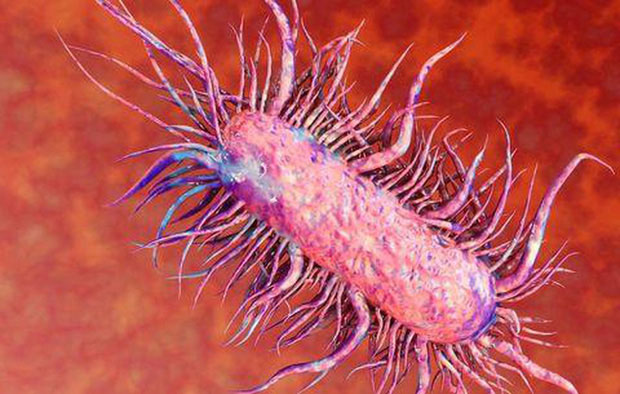Warn predatory bacteria to attack during the rainy season
It was thought that the disease had been forgotten, but recently, it continued to boom again and the death rate increased to 60% .
What kind of bacteria is Whitmore?
Assoc.Prof.Dr Do Duy Cuong said that whitmore is caused by gram-negative bacteria B. pseudomallei (also known as cannibal bacteria). When it enters the body, the bacteria attack many organs, leading to multiple organ failure and shock and death. Patients who have a history of cardiovascular disease, diabetes, chronic kidney disease, etc. are often at higher risk for organ damage.

Whitmore bacteria usually live in mud and water.
Whitmore is not a new or rare disease that has been "forgotten" in the community. The disease was first discovered in the world in 1911, appeared in Vietnam since 1936. The bacteria usually live in mud and water, the main route of transmission through damaged skin exposed to bacteria or breathe in dust particles that contain bacteria In addition, the disease does not currently have a preventive vaccine and when the disease has started, the course of the disease will progress very quickly, can take the patient's life after only 48 hours of admission.
Where are the infectious pathways of the whitmore cannibal bacteria?
- Due to transmission by eating and drinking (contaminated food).
- Due to direct contact with skin abrasions, contaminated soil or water (at the time of the rainy season).
- By inhaling dust particles containing bacteria.
- Bacteria are transmitted from mother to child through the mammary gland when the mother has an abscess of the mammary gland.
- Due to skin scratches contact with dead animals infected with whitmore like dogs, cats, cows, goats .
Some typical warning signs whitmore bacteria are invading the body:
- High fever.
- Having pneumonia.
- Abscess appears in many positions.
- Having a urinary tract infection.
For the most part, these are symptoms that are more common in patients with a history of diabetes or kidney, lung, or alcoholics, who often work with soil as farmers. In addition, the elderly are also at risk for this disease because of the weakened immune system.
As soon as the body appears the above symptoms, you need to quickly visit a reputable hospital, have a microbiological laboratory to be examined and treated properly, avoiding dangerous complications that may be encountered. later. In particular, patients who have been infected with whitmore bacteria should regularly re-examine because the disease has a high likelihood of recurrence, requiring perseverance during treatment.
So what to do to prevent whitmore bacteria from attacking?

Keep the body clean, especially the hands and feet always clean.
Assoc.Prof.Dr. Do Duy Cuong recommends that, in recent years, the number of reported whitmore cases is constantly increasing, the peak is usually concentrated in the rainy season from July to November . Therefore, those who work in contact with the soil and water environment must have labor protection devices, if any skin abrasions need early and thorough treatment.
In addition, everyone must be conscious of maintaining a clean body, especially hands and feet. If your hands and feet are contaminated with mud, you must wash them off with antibacterial soap and wipe dry before doing anything else.
- The first rainy season was flooded
- The disease is common in the rainy season and prevention
- Techniques for growing hybrid corn seeds BIOSEED 9696
- Watching Japan in the rainy season is even more beautiful than paintings
- Amazon forest leaves call the rainy season coming soon
- Stormy season, tropical low pressure will come soon in the South China Sea
- Why is 'Saigon shining sunny in the afternoon?'
- Those who are susceptible to respiratory disease when the rainy season comes
- Unusual rain in the South
- 'Living antibiotics' from bacteria
- The secret to taking care of cars in the hot and sunny season everyone needs to know
- Recommended prevention of flood season
 Why do potatoes have eyes?
Why do potatoes have eyes? 'Tragedy' the world's largest carnivorous life: Death becomes ... public toilet
'Tragedy' the world's largest carnivorous life: Death becomes ... public toilet Tomatoes were once considered 'poisonous' for 200 years
Tomatoes were once considered 'poisonous' for 200 years Detecting microscopic parasites on human face
Detecting microscopic parasites on human face